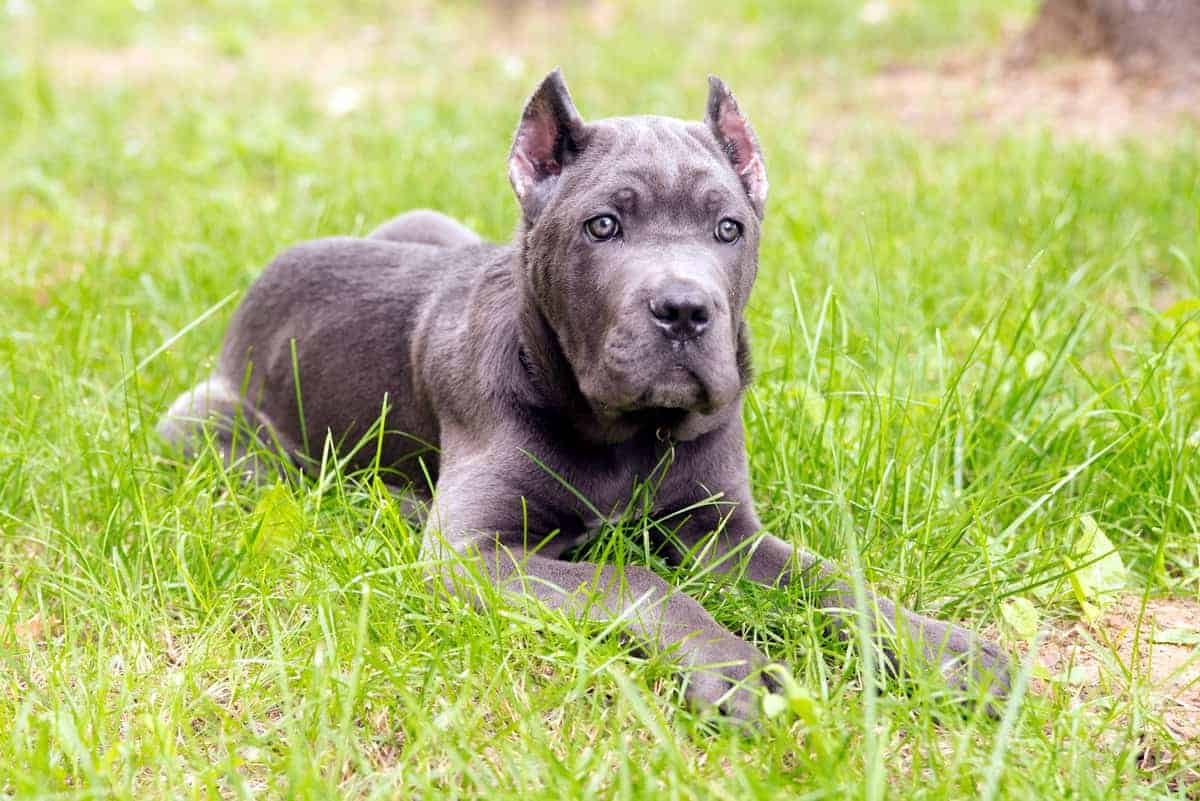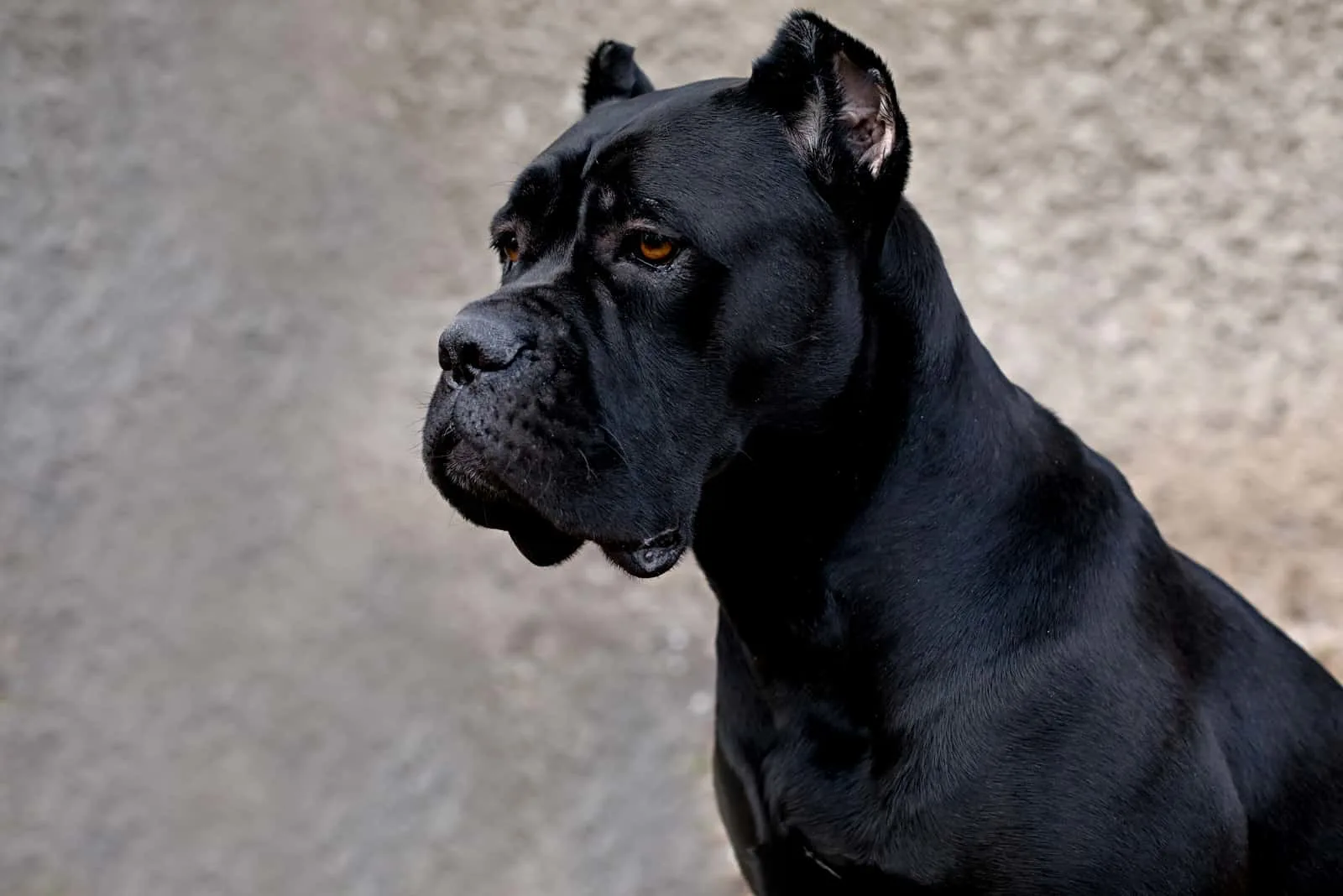Introduce and History

Despite being a matter of preference for many owners, clipping a Cane Corso’s ears is an integral part of the breed’s history and culture. A dog whose ears have not been clipped is not mistakenly referred to as having “natural” ears. Unlike the man-made dog breeds we’ve produced, no naturally occurring dog has floppy ears that fold over and block the ear canal. Long, floppy ears that block the dog’s ear canal from air and light are not a part of its normal anatomy. Ears may be made to stand up and function normally after being cropped.
The clipped ears of a working dog make it harder for other animals to bite or for humans to grasp the dog. When injured, an ear that has not been clipped bleeds profusely. If a working dog becomes tangled up in his or her ears or suffers an ear wound that causes bleeding, the dog is seriously disadvantaged, its performance may suffer, and the dog’s life may be in jeopardy. Cropping the dog’s ears removes the “handles” that may be used to grab and tear, therefore eliminating the potential that the dog’s own body could be used against it to cause harm or immobility.
It’s something to think about if you have more than one Cane Corso. The Cane Corso is a high-drive dog whose owners may expect a lot of roughhousing from their pets. They play with gusto and intensity. A dog with large, floppy ears is inviting trouble since other dogs may use them as grab grips. Unclipped ears may need many visits to the vet for repair. When unclipped Corsos play together, they can incur scrapes, wounds, and rips.
Ear cropping and Health Problems
In most cases, ear punctures are not life-threatening. A vet can simply sew them up, and medications will keep infections at bay. However, after having stitches placed in the ear, scarring is generally rather noticeable. Even though your doctor does all in their power to save your pet’s ear, sometimes the blood supply through the ear is interrupted, leading to improper healing or even complete loss of the ear. It’s important to plan for the possibility of this occurring again. Bear in mind, however, that ear cuts flow heavily, so much blood will be sprayed and tossed about if your dog suffers one and then shakes his head (walls, windows, furniture, floor, ceiling, yourself, etc).
Not only would cropping the ears of your Cane Corso protect it from harm, but it will also extend the dog’s healthy life by reducing the likelihood of ear infections, doctor visits, and antibiotic use.

Health-wise, uncropped, floppy-eared dogs are more likely to suffer from ear infections, which means they’ll have antibiotics for a longer period of time during their lives. Because of human interference in the form of selective breeding, many dogs now have floppy ears that weren’t present in their ancestors. Infections, mites, ticks, and bacteria flourish in the dark, wet, warm settings (such as is formed in an ear canal covered by a floppy hanging ear) (such as is created in an ear canal covered by a floppy hanging ear). The solution to avoid such difficulties is to establish a bright, dry, clean environment in the ears as when the ear is cut to an upright posture.
Ear infections in dogs are very unpleasant and may result in long-term hearing loss. Many dogs with persistent ear infections have an infection in the middle ear (or bulla) (or bulla). A concealed ear infection that goes untreated has a high chance of re-infecting the ear’s outer canal and causing ongoing discomfort and, in extreme cases, permanent hearing loss.
Cropping a dog’s ears is NOT cruel when done with competent contemporary veterinary treatment, despite recent attempts to the contrary by pencil pushers and animal rights activists. It truly returns the ear back to a natural condition for the increased health and comfort of the dog.
Around 8-12 weeks of age is the typical age range for cropping a puppy. While it is feasible to crop older puppies/dogs, as the pup develops the weight of the dangling ear starts to tear the cartilage down. Therefore, it gets more challenging to get the ear to stand erect after later-age cropping of a pup.
Ear cropping, unlike spaying and neutering, is a quick and easy procedure that just requires a veterinarian’s expertise. The puppies are drugged and anesthetized (unconscious) throughout the short procedure. The ears are cut, the edges are sewn and the puppies are awake again 15 minutes later. Two hours later, they’re wide awake, hungry, and eager to return home. Puppies act as if nothing had occurred the next day, continuing with their regular routines of eating and playing. In most cases, the sutures are removed after 7-10 days and salve is applied on the ear’s perimeter for roughly a week. There is no pain or discomfort involved, and the procedure is quick and painless.
How to Find the Best Vet to Crop Your Cane Corso’s Ears

Selecting a trusted veterinarian to perform the auricular amputation on your Cane Corso puppy is crucial. Many veterinarians are willing and able to do an ear crop, but only a small fraction of them are knowledgeable about the Cane Corso breed and the proper way to clip its ears. It is HIGHLY recommended that you confirm your veterinarian has expertise with Cane Corso crops by asking to see at least four or five images of mature Cane Corso dogs he has cropped. Far too many pets have had poor harvests from purportedly competent veterinarians for our liking.